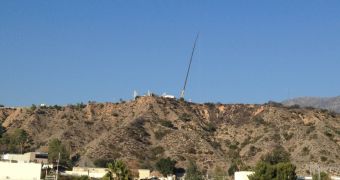Scientists at the NASA Jet Propulsion Laboratory (JPL), in Pasadena, California, are currently getting ready to test a new technology that would enable heavy spacecraft to land at locations on the surface of Mars that are inaccessible to existing descent and landing technologies.
When the two Mars Exploration Rover (MER) robots, Spirit and Opportunity, landed on the Red Planet in 2004, they did so encased in tetrahedrons outfitted with airbags, which simply bounced on the surface of our neighboring world until they stopped.
Alternatively, the Mars Science Laboratory (MSL) rover Curiosity was landed via the incredibly-complex Sky Crane system, which used a hovering vehicle to lower the 1-ton, Mini Cooper-sized machine gently at its landing location, before crashing around a mile (1.6 kilometers) away.
However, future spacecraft (possibly manned) destined to explore Mars and other celestial objects will probably be a lot heavier, and require new descent and landing systems to see them safely to their destinations. This is where the NASA Low Density Supersonic Decelerator (LDSD) project comes in.
If the weather allows for it, the first series of tests in this project will take place today, December 18. During the experiment, a large parachute will be pulled away from the ground at a speed comparable to what it would experience when deployed during landing on another planet.
With this test, NASA engineers hope to gain more data on how the parachute lines are deployed, and determine if the bridles function properly. The goal is to prevent entanglement between parachute components and other hardware on future spacecraft.
The parachute in question has a diameter of around 30.5 meters (100 feet), making it around two times larger than Curiosity's parachute, which had a diameter of only 15.5 meters (51 feet). Unlike the MSL drag tool, the new parachute will have to be deployed at higher supersonic speeds in order to safely decelerate a much larger and heavier spacecraft.
NASA says that the first tests on the LDSD project were conducted at the US Navy's China Lake Naval Air Weapons Station, in California, in 2012. Officials add that the experiments are scheduled to conclude in 2015.

 14 DAY TRIAL //
14 DAY TRIAL //